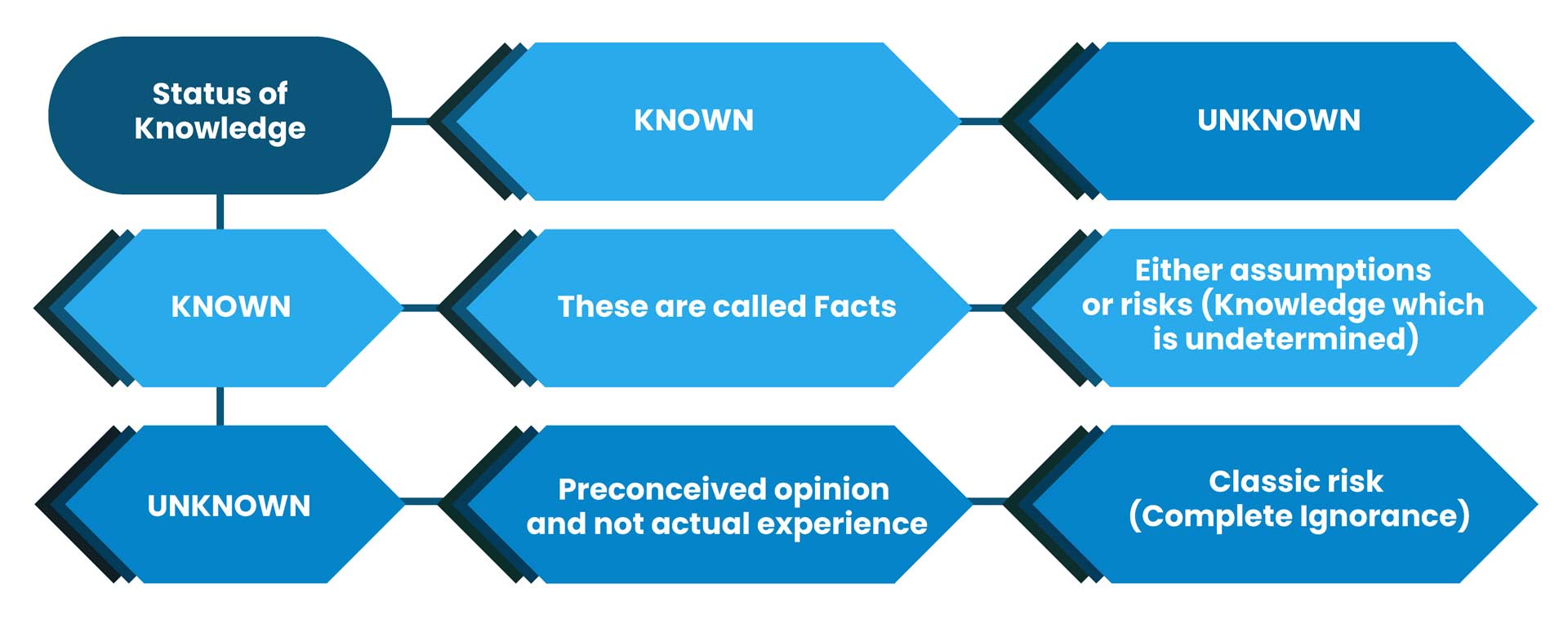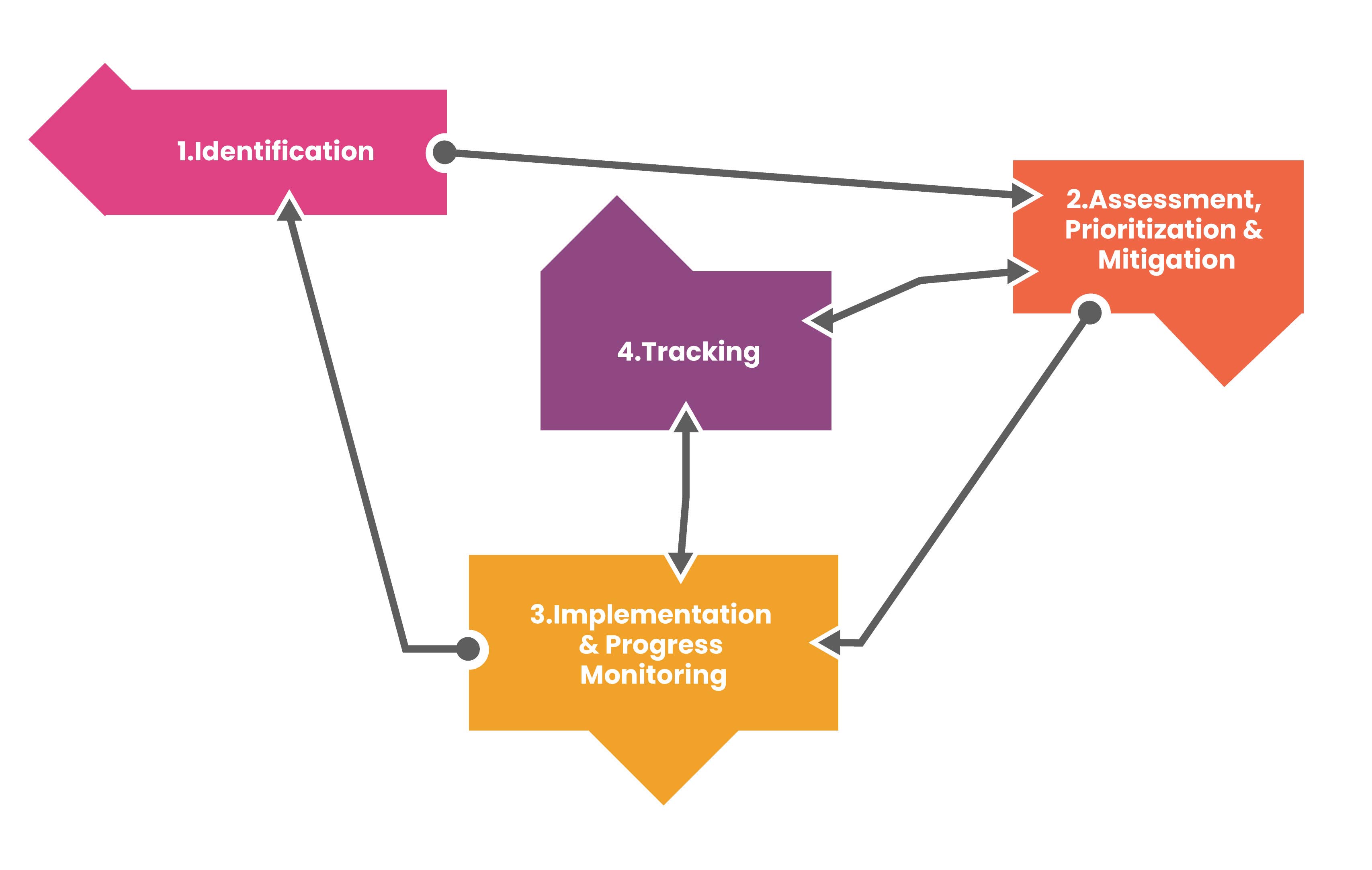Understanding Project Assumptions and Risks

Assumptions and risks are part and parcel of our day-to-day life. We cannot expect our planned tasks and activities to happen as per our expectations. Similarly, projects are also embedded with assumptions and risks throughout their lifecycle. Any circumstances leading to failures in projects are often linked to non-preservation of assumptions and risks. The possibility specific to assumptions is that they become accepted knowledge and hence need to be managed throughout the project.
The premise of an idea established to be true without any reliability is an assumption. Until assumptions are justified, it still signifies a risk. A risk is an event or condition with a possibility of uncertain occurrence that can impact the project goals and objectives either positively or negatively. They can be categorized as a prospect / opportunity and threats. Risks are a part of every project but differ in terms of the possibility of occurrence and the level of impact.
As it’s commonly said that there cannot be any project with zero risks, but it can only be negligible.
Types of assumptions and risks
Assumptions and Risks are grouped into Knowns and Unknowns. It is a powerful tool mechanism to understand what we know and what needs to be known. The four-quadrant classification is as below:
- Known-Knowns: Things we are aware of and recognize.
The risk can be measured, and its effects can be quantified
For example, the possibility that Company A would lose some of its customers to its competitor Company B. The probability of customers leaving them and the impact that such a loss would have on their financial statements can be relatively quantifiable
- Known-Unknowns: Things we are aware of and do not recognize. It can either be assumptions or risks.
Changes to business/organization: The new mergers, strategies, and a transfer of priorities can completely shift the focus of the organization
Technology: Rolling out software updates to systems and its impact to the current project is unknown
- Unknown-Knowns: Things we know and recognize but do not completely understand. These are blind spots.
A company may expand to a new vertical/area and be unaware of the challenges that may arise
- Unknown-Unknowns: Things we do not understand and there is no possibility of quantifying risk.
The business is not even aware of the existence of such a risk. Hence, the question of measuring and quantifying risk does not really arise. These risks typically tend to have a very high impact and endanger the very existence of the organization
For example, the coronavirus global pandemic is an example of this risk. It is hard to foresee the existence and impact of this type of risk with any degree of precision
Best practices for project assumptions
Some of the best practices that can be incorporated into any project to manage assumptions and risks are as follow:
- Identification: Proactively identify assumptions and risks by creating assumptions log and risk register. Assumptions should be based on facts and need to be precise and manageable.
- Assessment, prioritization & mitigation: Classify and highlight the assumptions and risks based on impact and urgency. Assign owners to specific items with defined end dates to ensure timely closure. Record the areas of uncertainty to ensure the accuracy of the assumption increases when more data is collected.
- Validate the probability & outcomes of the assumptions and risks
- Outcomes may include cost, resource, schedule, capability, performance or functional impacts
- Develop the mitigation plans designed to handle, remove or decrease prospect to an acceptable level
3. Implementation & Progress Monitoring:
- Observe the progress as part of the program review and manage continuously
- Review and track mitigation actions for progress (Regularly assess open items and follow up on outstanding actions)
- Consistently review the changes in the project to understand the importance, influence, or significance and redefine strategies and action steps as necessary
- Close elements that are no longer relevant to the project
4. Tracking: The tracking tool is used for documenting the results of prioritization analysis that provides input to impact assessment, mitigation, and progress monitoring (Ex. Root Cause Analysis, Brainstorming, SWOT -Strengths, Weaknesses, Opportunities, and Threats) analysis etc.
Way ahead for project assumptions and risks
Dynamically managing project assumptions and risks are a shield against the unknowns. Recording, assessing, and tackling these items creates awareness and control. Unforeseen issues might still arise, but we will be better prepared to take action.
Microland DPS PMO delivers projects and programs through the experienced project and program professionals across sectors​. Microland DPS PMO establishes standards and centers of excellence/PMO for an organization to run the projects effectively.
The Microland Digital Professional Services (DPS), Project Management as a Service (PMaaS) is an offering from DPS PMO of Project, Program, and Portfolio Management services to our clients directly as part of our CDC & DWS offerings.
Project Management as a Service (PMaaS) is a solution partner offering for Microland DPS clients to manage and implement business value project & programs, and to implement a strategy to manage and support all aspects of Project Portfolio Management Office (PPMO) operations along with the right tools.


















